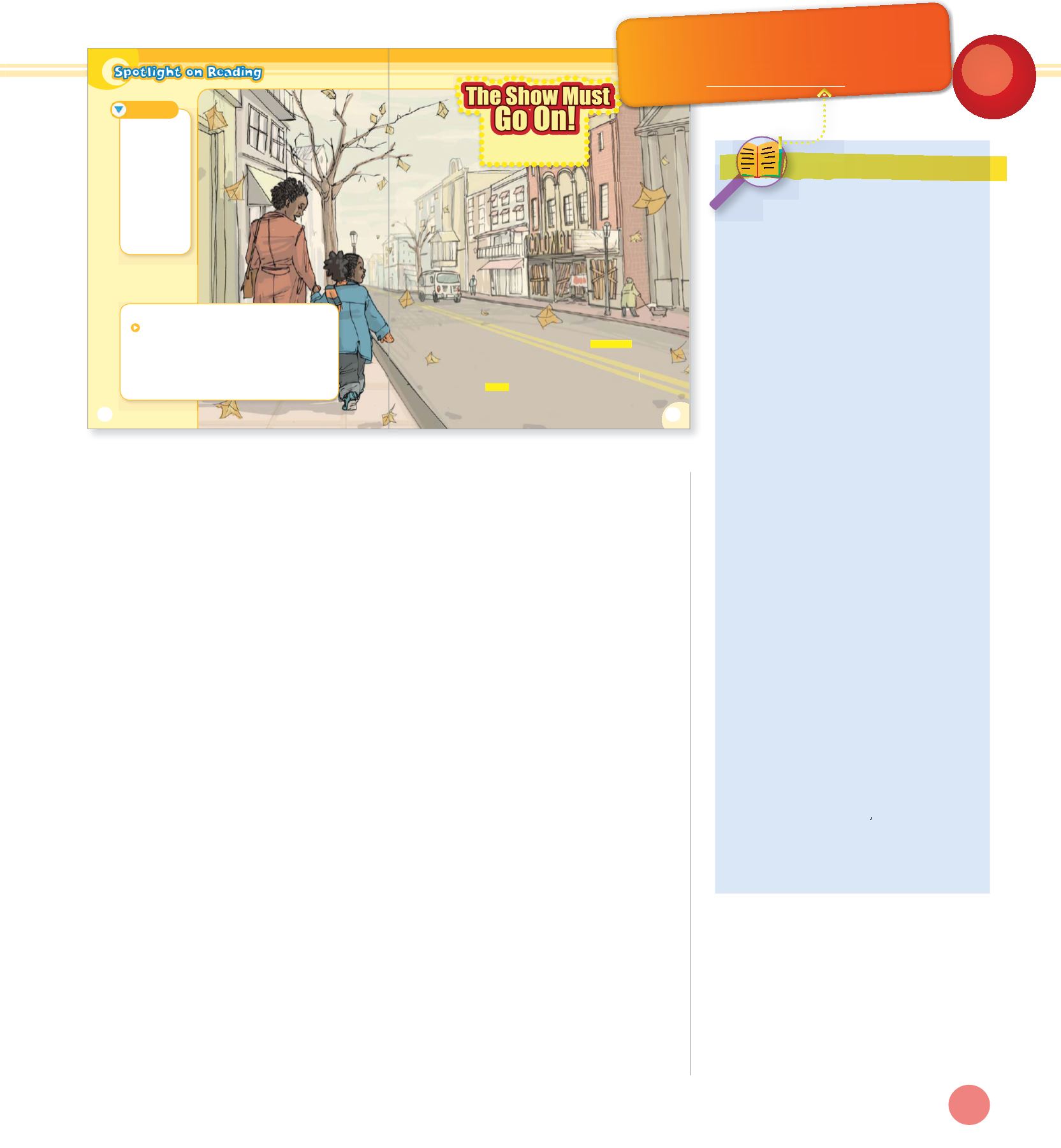

Read and Discuss the Stor y
READING COMPREHENSION
Student Book page 113: First, decide in what order the following activities will best
serve the needs of your students. Read the story aloud while students follow along
in their books. Use the Discuss questions to develop comprehension and language
skills. Encourage beginning students to respond with phrases or simple sentences.
Intermediate students should respond in complete sentences. Advanced students
should support their answers with details from the text. Tips and strategies
are also included to facilitate instruction in how to read an image to further or
enhance comprehension. Encourage students to use a dictionary, employing
the tips included in this section, to look up unfamiliar words. Use the reading
comprehension skills and strategies to enrich the reading activity for students.
My Community
Unit 4
112b
e definition of a word,
must use a dictionary. In a
dictionary, the definition of each
entry, or word, is explained using
one or more definitions.
When a word has more that one
definition, the first one given is the
most common in current usage. For
example, for the word
village
, these
are the two most common usages:
1. A very small town; 2. The people
who live in a village.
In addition to the definition,
most dictionaries also include the
following information to help the
user learn more about a particular
word:
Q
cross-references that refer the
reader to additional information
about the word elsewhere in the
dictionary
Q
different spellings
Q
alternative names
Q
related adjectives
Q
idioms, or commonly used
expressions
Q
etymology, or the history of the
word
Q
examples to illustrate the
definitions
Q
derived words formed by adding
suffixes such as
–ly
, and
–ness
.
Q
listed entries or words formed by
adding prefixes such as
non–
,
over–
, and
un–
.
Spotlight on Reading
$
( " #
" $
38<*7 9-* 6:*89.438 .3 (4251*9* 8*39*3(*8
#-&9 )4*8 9-* 9.91* 9*11 >4: 9-* 8947> 2.,-9 '* &'4:9
#-4 )4 >4: 9-.30 9-* 5*451* .3 9-* 5.(9:7* &7*
#-&9 )4 >4: 9-.30 9-*> <.11 )4 .3 9-* 8947>
#-&9 )4 9-* 0*> <47)8 9*11 >4: &'4:9 <-&9 2.,-9
-&55*3 .3 9-* 8947>
97&.3 89&9.43
9-*&9*7
1.'7&7>
9473 )4<3
-.8947>
94<3 -&11
2&>47
(422:3.9>
14(&1
5&9741
97&+A(
7*5479*7
$
#7.99*3 '> *98> *((4
11:897&9*) '> &(:3)4 *>4
Sonia lives in Phoenixville, Pen syl n vania. The town
is more than 100 years o d. l
her T e is an old train st
,
ation
an old boat dock, and many old buildings in town.
Sonia loves the Colonial Theater on Bridge Street. She
is sad because the owner is closing it. Her mother told her,
“It’s an old theater and needs a lot of repairs. The owner
doesn’t have enough money to fix it, so he has to sell it.”
you
find th
To
Dictionary Tips
activities encourage students
create their own
dictionaries
based on the
vocabulary presented in the unit.
Dictionary Tips
25


















